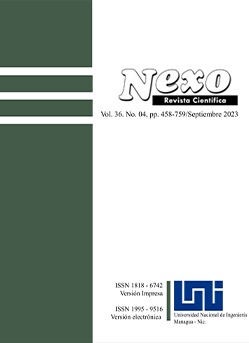Multi-vector development of tourism enterprises
DOI:
https://doi.org/10.5377/nexo.v36i04.16804Keywords:
development, tourism, organization, resource provision, life cycle, functioningAbstract
The article is devoted to the formation of approaches to the multi-vector development of tourism enterprises. The multi-vector development of tourism enterprises is one of the most complex systems that consider all key areas and types of activities, divisions, and spheres of functioning. The purpose of the work is to substantiate approaches to assessing the effectiveness of functioning and the main directions of strategic development of tourism enterprises at various levels. The authors identify organizational transformation models, risks of multi-vector development, features of the strategy, and communication of interaction with consumers of tourism services using qualitative methods of data analysis. The scenario approach to the development of enterprises within the framework of multi-vector development is a priority and can be implemented based on the introduction of innovative products by a tourism enterprise and provides for the renewal of technical and technological support, training, or recruitment of new personnel, the formation of a marketing policy for bringing tourism services to the market, informing consumers, creating or reorganizing service services. The authors establish that the proposed approaches to ensuring the multi-vector development of tourism enterprises allow for forming the basis for planning, organizing, controlling, regulating, and implementing high-quality multi-vector development of a company's activities.
Downloads
1158
Downloads
Published
How to Cite
Issue
Section
License
Copyright (c) 2023 Universidad Nacional de Ingeniería

This work is licensed under a Creative Commons Attribution 4.0 International License.
The authors who publish in Nexo Scientific Journal agree to the following terms:
- Authors retain the copyright and grant the journal the right of the first publication under the license Creative Commons Attribution License, which allows others to share the work with a recognition of the authorship of the work and the initial publication in Nexo Scientific Journal.
- Authors may separately establish additional agreements for the non-exclusive distribution of the version of the work published in the journal (for example, in an institutional repository or a book), with the recognition of the initial publication in Nexo Scientific Journal.
- Authors are allowed and encouraged to disseminate their works electronically (for example, in institutional repositories or in their own website) before and during the submission process, as it can lead to productive exchanges, as well as earlier and greater citation of published works.










